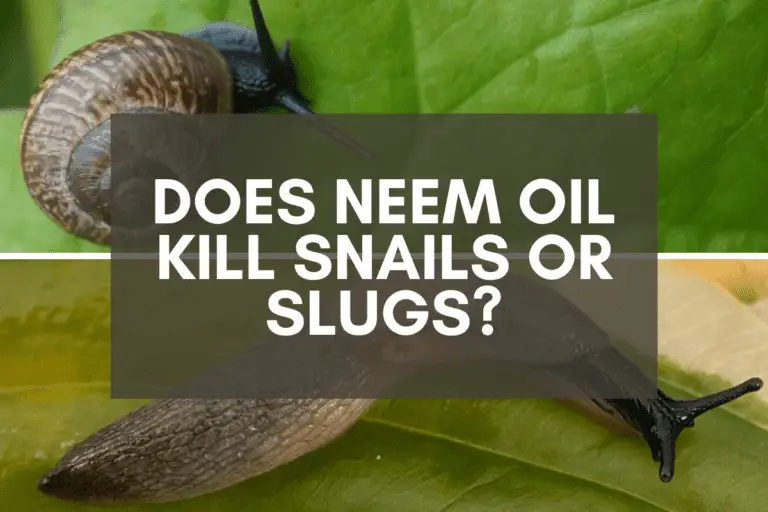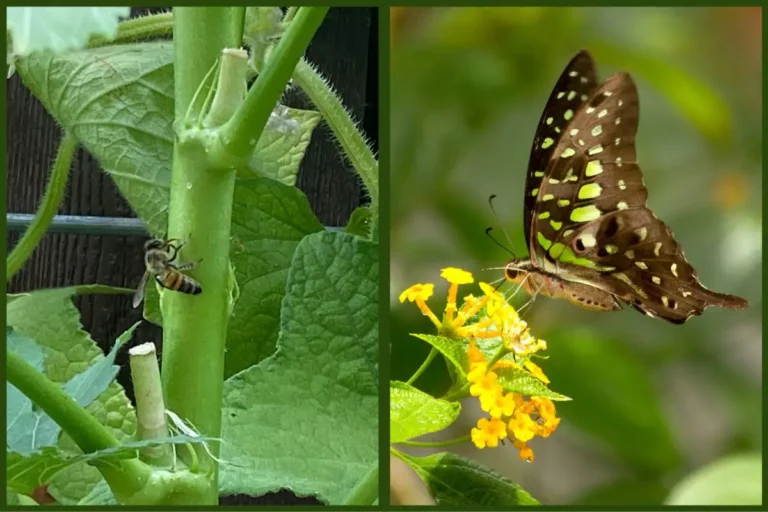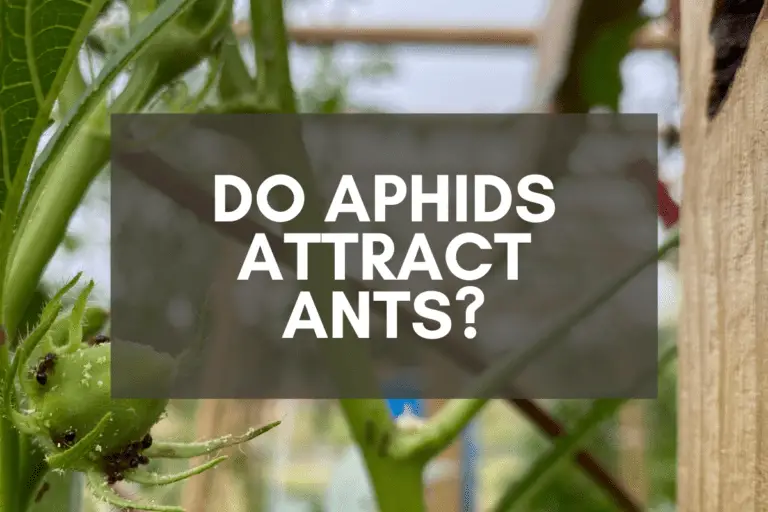Will Neem Oil Kill Beneficial Nematodes? Advice + Tips
Given the increasing global use of commercial pesticides and the insecticidal immunity and resistance that many bugs have developed in response, gardeners sometimes have to think a bit outside the box when it comes to pest management, especially those of us who wish to garden organically.
For this reason, I’m a big proponent of natural methods of pest control. I use insecticidal soap regularly in my garden–it’s great when fighting aphids, spider mites, and whiteflies–but I also like two other natural treatment methods that have grown more and more popular over the past few years: neem oil and beneficial nematodes.
But given neem oil’s bug-destroying capabilities–and since beneficial nematodes are living organisms, albeit microscopic ones–I started to wonder: Can I use these two at the same time? Or will my neem oil kill off my beneficial nematodes?
Neem oil will not harm beneficial nematodes, including commonly used species such as Heterorhabditis bacteriophora and Steinernema carpocapsae. Studies have shown that neem oil will have damaging effects on destructive nematodes but that it causes little to no harm to beneficial species.
But before we look at neem oil’s impact on nematodes, let’s do a quick overview of a few important topics:
- Nematodes: What Are They?
- What Do Nematodes Do to Plants?
- Bad Nematodes vs. Beneficial Nematodes
- Can I Use Neem Oil with Beneficial Nematodes?
If you want to skip straight to the section on neem oil, just scroll past those first three sections to find what you want.
But if you don’t know much about nematodes and want a quick introduction, you’ll find a good summary below plus links to more in-depth studies.
After I provide a basic overview of what nematodes are and what they do, we’ll take a closer look at the science behind neem oil and nematodes.
Nematodes: What Are They?
Imagine that you’ve just walked up to a microscope and leaned over to look through it. When you do, you see the smallest worm-look-alike creature you’ve ever seen. That’s basically what nematodes are: Microscopic roundworms that look a lot like teeny tiny eels.
Scientists have discovered more than 30,000 nematode species–which can be found literally everywhere on earth, from the tallest mountains to the lowest ocean depths–but some researchers believe there are many, many more species alive on earth, possibly upwards of 1 million species. Some studies even suggest that there might be as many as 10 million species!
Thankfully for us gardeners, only a very small fraction of known nematodes exhibit destructive, parasitic behavior, and of these, only an even smaller number are known to cause plant damage.
And as we’ll see below, there are nematode species that help us fight back against damaging bug infestations because, luckily for us, those particular nematodes happen to attack various insect species that cause harm to garden plants.
The nematodes most likely to damage plant life include:
- Citrus Nematodes, Tylenchulus semipenetrans, More Info
- Dagger Nematodes, Xiphinema americanum, More Info
- Pinewood Nematodes, Bursaphelenchus xylophilus, More Info
- Ring Nematodes, Criconemoides xenoplax and Mesocriconema ornatum, More Info
- Root Knot Nematodes, Meloidogyne, More Info
- Root Lesion Nematodes, Pratylenchus, More Info
- Sheath Nematodes, Hemicycliophora arenaria, More Info
- Stem and Bulb Nematodes, Ditylenchus dipsaci, More Info
- Sugarbeet Cyst Nematodes, Heterodera schachtii, More Info
Of all nematodes everywhere, very few species will cause any harm whatsoever.
Unfortunately, the few nematode species that do can be quite destructive, so let’s take a moment to talk about what happens when invasive nematodes begin attacking your plants.
What Do Nematodes Do to Plants?
The damage that nematodes do to plants not only varies depending on the species of nematode and the kind of plants they’ve attacked. It also varies based on what stage of growth the plant was in when the nematodes began attacking it.
Take root knot nematodes, for instance. These are perhaps the most destructive nematode species. Here’s an abbreviated list of the plants that root knot nematodes have been known to infest:
| Alder | Almond | Apple | Apricot |
| Bean | Beet | Boxwood | Broccoli |
| Brussels Sprouts | Cabbage | Cactus | Carrot |
| Cauliflower | Cedar | Celery | Cucumber |
| Eggplant | Grap | Hydrangea | Juniper |
| Lettuce | Melon | Mulberry | Oak |
| Palm | Peach | Pea | Pepper |
| Pine | Poinsettia | Potato | Radish |
| Rose | Spinach | Spruce | Squash |
| Strawberry | Tomato | Turnip | Walnut |
When root knot nematodes attach themselves to the plants named above, they begin to cause a swelling of the plant’s roots, which are called “galls” and which provide a space for the nematodes to feed.
As time goes on, the galls multiply and grow larger, making it much more difficult (and sometimes nearly impossible) for the plant to properly intake water and other nutrients from the soil.
But root galls are just one sign of nematode destruction. Other species will cause stunted root growth or even root lesions. Still others will damage the very tips of roots, which are crucial for the plant’s uptake of vital nutrients, or cause all kinds of strange, unnecessary root branching.
What ultimately happens in such instances is root damage, which can stunt plants’ growth or even lead to premature decay and death, either because the roots are too far gone or because the plant becomes more susceptible to infestation and disease.

Bad Nematodes vs. Beneficial Nematodes
When I use the phrase “bad nematodes” and “beneficial nematodes,” what this simply means is that some species (the bad ones) are more likely to feed on the plants I want to cultivate in my garden while other species (the beneficial ones) are more likely to feed on unwanted garden pests.
I’ve mentioned several bad nematode species above, so I’d like to point out a few of the good ones so that you can buy with confidence when you purchase beneficial nematodes either online or through your local garden center or home improvement store:
| Beneficial Nematodes | Garden Pests |
|---|---|
| Heterorhabditis bacteriophora | Asparagus Beetle, Barworm, Borers, Colorado Potato Beetle, Corn Earworm, Corn Rootworm, Cucumber Beetle, Flea Beetles, Fleas, Gall Midges, Grape Root Borer, Grubs, Flies, Japanese Beetle, June Bugs, Leafminer, Ticks, Weevils |
| Steinernema carpocapsae | Armyworms, Budworms, Caterpillars, Cockroaches, Codling Moth, Corn Earworm, Cranberry Girdler, Cucumber Beetle, Cutworms, Flea Beetles, Fleas, Flies, Fruit Flies, Leafminers, Peach Tree Borers, Leafminers, Webworms, Weevils, Wireworms, Wood Borers |
| Steinernema feltiae | Armyworms, Cabbage Maggot, Cucumber Beetle, Corn Earworm, Cutworms, Fruit Flies, Fungus Gnats, Onion Maggot, Raspberry Crown Borer, Thrips, Weevils |
There are other beneficial nematode species (Heterorhabditis heliothidis and Steinernema glaseri), but these are not as popular with gardeners as the nematode species noted above because they don’t attack as many unwanted pests as H. bacteriophora, S. carpocapsae, and S. feltiae.
What’s great about the nematodes listed above is that, when applied properly to your soil, they’ll seek out destructive insects, begin feeding on them, and kill them off before those bugs have time to mature, emerge from their hiding places, and begin causing problems for you and your garden.
Can I Use Neem Oil with Beneficial Nematodes?
So now that we’ve covered some nematode basics and looked at various destructive and beneficial species, let’s talk about neem oil and its impact on beneficial nematodes.
Because here’s the thing: Beneficial nematodes are an effective solution to many pest problems, but they’re not cheap. One of the most affordable options–a product sold by Nature’s Good Guys that contains roughly 50 million beneficial nematodes–will still cost upwards of $30.
(You’ll pay less for packages containing 5 million, 10 million, 15 million, or 25 million, but the 50 million package gives you the most bang for your buck. Nature’s Good Guys also sells a 500 million package that offers the best value per million nematodes, but it costs a lot, and most people don’t need that many nematodes!)
The last thing you want to do is apply nematodes to your soil, then unwittingly harm them shortly thereafter.
This is why neem oil might cause some concern: Neem oil won’t kill earthworms, ladybugs, or helpful pollinators. However, it can harm or destroy over 200 garden pests–including aphids, armyworms, fruit flies, gnats, mites, mealybugs, scales, spider mites, whiteflies, and others–by causing all kinds of biological, hormonal, and reproductive problems.
So what about beneficial nematodes? Will neem oil kill or harm them in any way?
Unlike chemical pesticides that are known to kill off microscopic organisms, neem oil will not harm beneficial nematodes. In fact, studies have shown that applying neem oil in conjunction with beneficial nematodes can kill off garden pests without causing harm to the nematodes.
Let’s take a quick look at the results of 2 recent studies that have shed light on this subject:
- Researchers ran an experiment to see if neem oil would impact Steinernema feltiae nematodes. Neem oil had no impact on the mortality or virulence of S. feltiae nematodes. However, they discovered that when adding soap to neem oil, the resulting spray killed off 13% to 25% of the beneficial nematodes. They recommend taking care when combining soapy surfactants with neem oil so as not to unintentionally decrease the nematode population.
- Another study looked at neem oil’s effect on bad nematodes (the parasitic Meloidogyne incognita) as well as good ones (the beneficial Heterorhabditis bacteriophora). They noticed that neem oil reduced destructive root galls by an incredible 88%. It also harmed the M. incognita nematodes, reducing their hatching rate by 85% and increasing their mortality rate by 68%. The best part of this study was neem oil’s impact on the beneficial H. bacteriophora nematodes–it didn’t harm them at all.
From what I’ve seen, these are the two most authoritative studies examining what happens when neem oil is applied alongside beneficial nematodes.
The good news: Neem oil seems to be a perfectly safe compliment to beneficial nematodes. You can do either one separately or both together. It doesn’t seem to matter.
The bad news: Neem oil works best when mixed with a soapy surfactant, so care needs to be taken since one of the studies above showed that soap can negatively impact some beneficial nematodes.
Applying Nematodes to Your Garden in 4 Easy Steps
Now that we know what nematodes do and what the science says about neem oil, let’s finish by looking at the steps you’ll need to take to apply beneficial nematodes to the soil.
Step 1: Read the Instructions
This might go without saying, but I think it’s important to read the instructions carefully before you do anything with your beneficial nematodes. The last thing you want to do is to invest in nematodes, then mess up the application process.
Take the extra 3-4 minutes to read the instructions before doing anything else.
Step 2: Moisten Your Soil
Beneficial nematodes are going to struggle, and many likely won’t make it, if you apply them when your soil is bone dry. I recommend giving your soil a nice watering before you apply the nematodes.
Step 3: Mix Beneficial Nematodes with Water
Here’s where things get important: You’re going to apply the nematodes to your soil with a water application, so you’ll need to grab a 5-gallon bucket and fill it with the appropriate amount of cool or lukewarm water based on the manufacturer’s recommendations.
Most nematode manufacturers are likely going to recommend anywhere from 1 to 5 gallons of water. Just follow the instructions, and you’ll be fine!
Step 4: Apply to Soil with Watering Can or Garden Sprayer
Once you’ve mixed your nematodes properly, the watery solution should be added to a watering can or garden sprayer and then poured onto the soil in and around your garden.
Nematodes won’t get to work in places where you don’t add the watery mix, so consider beforehand exactly where it needs to go and apply accordingly.
Here’s a few final pointers:
Try adding nematodes to the soil when the weather outside is neither very cold nor super hot, roughly 45℉ to 80℉ (7.2℃ to 26.7℃).
Once you’ve added nematodes, be sure to apply a little additional water to your soil. But do not apply so much that you end up with water runoff.
If it’s hotter than 80℉ (26.7℃) outside, I recommend watering very well before you apply nematodes. You might even do two waterings with a small break in between or wait for a cooler day to apply the nematodes.
Just remember, you can continue using neem oil on your plants after you’ve applied the beneficial nematodes, but here’s two things to keep in mind:
First, wait a day or two to spray neem oil after you’ve applied your nematodes if you’re using a foliar spray application. I would avoid neem oil soil drenches for an extended period of time (4-6 weeks) after applying beneficial nematodes to the soil since no studies have been done on the subject, so it’s unclear what might result.
Second, foliage applications typically require mixing neem oil with a soapy liquid emulsifier, a process I’ve outlined in articles on making effective neem oil sprays, applying neem oil on tomato plants, and using neem oil to kill off armyworms and spider mites. In this case, don’t spray your plants so much that runoff drips down the plants and onto the soil.
It’s unclear how much soap it takes to kill off beneficial nematodes, so I think it’s best to play it safe.
Neem Oil Basics: A Quick Overview
If you’ve been reading this article but aren’t too familiar with how neem oil works, here’s a short summary of the basics with lots of links to articles where I discuss neem-related topics in much more detail in case you’d like to read more.
Neem oil is derived from the neem tree (Azadirachta indica), which is native to Africa and Southeast Asia. It’s safe to use on fruits and vegetables, and it typically kills off bugs in 4-7 days after application.
When applying neem oil in your garden, you’ll need to take care. It’s possible to apply too much or to burn your plants if you apply it at the wrong time of day (although rinsing off neem oil is possible if you follow these 3 steps).
There are plants you probably shouldn’t use neem oil on (such as herbs or plants with wispy, delicate foliage), but in general, neem oil can be applied to most plants in your garden.
But if you’re planning to apply it before a harvest, you’ll need to take care to wash your veggies very well. Neem oil residue won’t hurt you or your furry friends, but you really don’t want to eat veggies covered such residue.
Finally, some people use neem oil but don’t store it properly or find that it doesn’t work as expected. There are usually several reasons why neem oil doesn’t work, so you’ll need to figure out which reason you’re dealing with, then work to make sure you avoid such mistakes in the future.
Further Reading
If you’ve enjoyed learning more about beneficial nematodes and neem oil, check out these additional articles to read more:
- Can You Use Neem Oil on Tomato Plants? 10 Reasons Why
- Using Neem Oil to Kill Pill Bugs: Should You Try It?
- Washing Neem Oil Off Vegetables: Do This Before Eating
- 11 Proven Ways to Stop, Kill, and Get Rid of Spider Mites
Credit to CSIRO for the photo adapted for this article’s featured image.







